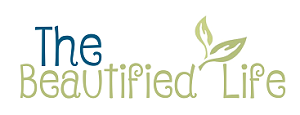If you suspect that you have shingles, the first symptom you should watch for is the appearance of a rash. You may experience tingling, pain, and itching in the affected area. Your pain may be mild or intense. The rash will begin as small pimples and eventually change into a blister filled with pus. These blisters will usually break open within 7 to 10 days.
Symptoms
Symptoms of shingles include skin rash, tingling, and pain in one or two locations. The most common site is the upper abdomen, but the symptoms may spread to other parts of the body. Fever and chills may also accompany the pain. Unlike chickenpox, which causes a rash that disappears after a few weeks, shingles symptoms can also include pain in the face or ears.
The symptoms of shingles in children may be mild, such as a fever, tiredness, and achy feelings. In adults, however, the symptoms can be more severe. In the skin, nerve damage may cause persistent pain, lasting well after the rash is gone. If shingles spreads to the eye or brain, it can cause cellulitis and impetigo. It can be life-threatening.
Diagnosis
Early diagnosis of shingles can help reduce the risk of developing postherpetic neuralgia and the disease’s long-term complications. However, the recent COVID-19 pandemic has made prompt diagnosis of shingles a difficult task. Patients were reluctant to see healthcare providers in person because of the risk of COVID exposure. Healthcare providers, for this reason, increased the use of telehealth services to treat patients from the comfort of their homes.
While shingles symptoms are common, a medical professional should be consulted to determine a proper diagnosis. If possible, a health care provider should first rule out chickenpox. Vaccination reduces the risk of getting shingles and prevents the disease entirely if possible. However, this preventive measure can’t fully protect against the disease. In most cases, the best way to prevent shingles is to get vaccinated against chickenpox.
Treatment
Treatment of shingles symptoms may include a variety of medicines and remedies. In most cases, a doctor can confirm the diagnosis and give treatment based on the signs and symptoms. He or she will review the health history and may draw a sample of the blister fluid for laboratory analysis. While medicines do not eliminate the virus, they can speed up healing and decrease complications. It is important to visit a doctor as soon as possible if you have any of the symptoms of shingles. The American Academy of Dermatology recommends visiting a healthcare professional within three days.
Depending on the severity of your shingles symptoms, treatment can help you deal with the painful condition. Treatment is especially important for people over 50, who are more prone to developing the disease. Antiviral medicine can help prevent shingles, particularly when the disease involves the eye, ear, or other parts of the body. Usually, a course of antiviral medicines lasts seven days. Treatment may also include using anti-histamines to suppress the symptoms of shingles.
Complications
The blisters of shingles are similar to those of chickenpox, although the rash tends to occur in clusters. The rashes often merge into a painful area, called a “dermatome,” which contains the nerves of the infected nerve root. Shingles most commonly affects the face, forehead, and eye region. Internal organs may also be affected. Treatment for shingles can include corticosteroids or antivirals.
One of the most common shingles complications is postherpetic neuralgia, which causes persistent pain in the area where the rash was. This pain can last for months or even years and interfere with daily life. It is more common in people over 40 than in younger adults. This complication is a painful neurological condition that has no cure. In some cases, patients may experience postherpetic neuralgia years after the rash disappears.
Although the virus responsible for shingles is harmless, it can lead to secondary infections caused by bacteria. These infections are usually caused by a strain of the bacteria Staphylococcus aureus or Streptococcus pyogenes. Treatment for secondary infections includes antibiotics. Calamine lotion may also help relieve symptoms. While calamine lotion can be helpful, it has limited effectiveness for shingles. Antiseptics are not recommended for treating shingles because they may promote the development of resistant strains of bacteria.



